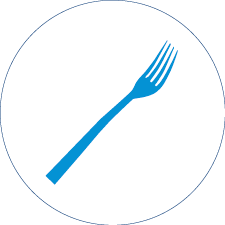
SIZE:
1 m for 50 kg to 100 kg, up to 3.65 m and 320 kg.
LIFE EXPECTANCY:
Up to 50 years.
LIFE CYCLE:
It reaches sexual maturity at approximately 5 years for males and 9 years for females.
Scientists believe that females spawn between February and May. Millions of eggs are laid and subsequently fertilized.
After 30 to 40 days of life, the halibut’s left eye migrates to its right side, and its body turns. It then becomes a flatfish. Halibut, therefore, does not have that “little crooked look” since its birth.
Atlantic halibut is brownish green to very dark brown on its right side (i.e. its back), allowing it to blend into the marine substrate. Its lateral line is arched and visible. Its tail fin is indented. Atlantic halibut has a wide mouth with numerous sharp-edged teeth. The young halibut’s eyes migrate to the right. Its belly, which is on the left side, is turned toward the sea bottom and is blind. The belly is white with some grey and sometimes red mottling.
On the seabed, between 10 and 2000 m depth.
PREYS:
Shrimp
Crabs
Marine worms
Other fish
PREDATORS:
Sharks
Seals
MACHINES:
Longline, line, gillnet.
REGULATIONS:
- Minimum catch size since 1994: 81 cm
- Quotas in effect since 1988
Stocks declined during the 1950s, but they have since increased. Canada’s stock assessment, performed in 2022, shows an improvement.
Halibut is the world’s largest flatfish. Because of its size, it is of significant commercial value.
Make way for other fish
In 1852, Moses Perley, a New Brunswick lawyer and businessman, fisheries observer and journalist, wrote in a report that halibut were so plentiful and so large that halibut fishermen avoided certain areas; otherwise, their boats would fill up with fish too quickly.
Atlantic halibut is a Smarter seafood-listed species.
BENEFITS:
Rich in protein, omega-3 fatty acids, selenium and vitamin D.
LET’S COOK:
Firm texture, lean white flesh. Fewer bones (perfect for the less experienced cook).
Must be consumed within 48 hours when fresh or within four to six months if frozen.
OUR CULINARY ADVICE:
- Favour short cooking times to avoid drying out (15 minutes oven-baked, 2 minutes on each side when pan-fried).
- Defrost in a mix of water and milk for two hours to recover its soft and tender texture.






